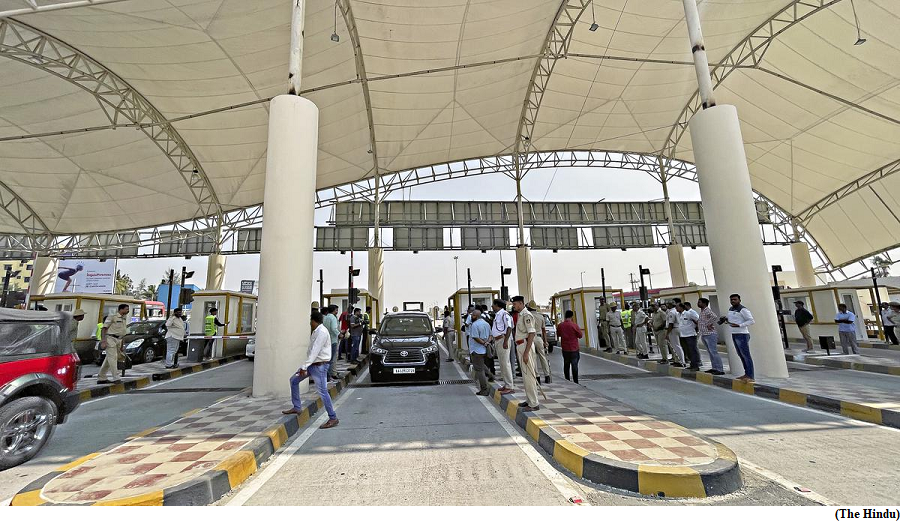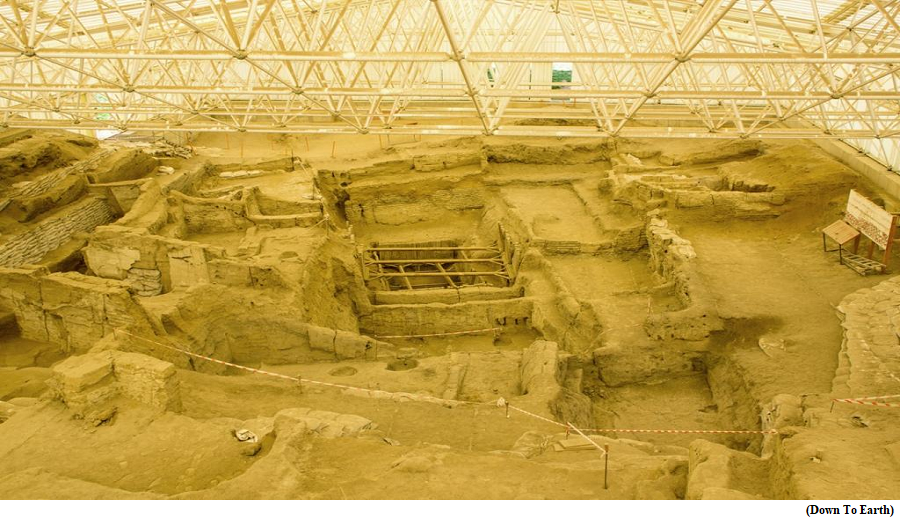Scientists genetically modify sexual fruit fly to reproduce asexually (GS Paper 3, Science and Technology)

Context:
- The fruit fly (Drosophila melanogaster) has been among the favourite organisms of genetics researchers for more than a hundred years.
- Recently, researchers from Cambridge University and the California Institute of Technology were able to ‘engineer’ a sexually reproducing fruit-fly species to reproduce asexually, demonstrating the profound biological consequences of relatively minor genetic manipulation.
Drosophila family:
- Fatherless reproduction is known as parthenogenesis. Earlier, other researchers had collected fruit-fly-like specimens from diverse geographies and compared them in different ways with the canonical specimen and with each other, to gauge the extent of their natural diversity.
- The collection represented more than 1,600 Drosophila species. Of these, one species, Drosophila mangebeirai, was found to consist only of females. The eggs produced by isolated females developed directly into female progeny without having to be fertilised by sperm from a male.
- Many species (about 76%) that ordinarily reproduce sexually were found to also hatch a small fraction of eggs laid by isolated virgin females into larvae, a smaller fraction of which went on to develop into adults.
- The name for such species i.e. which are arbitrarily parthenogenetic a small fraction of the time is facultatively parthenogenetic. One of them was Drosophila mercatorum.
- The canonical species lused in research, Drosophila melanogaster, is however strictly sexual.
The genes for parthenogenesis
The researchers set themselves two goals:
- To identify the genes that allow unfertilised Drosophila mercatorum eggs to complete parthenogenetic development.
- To modify the Drosophila melanogaster genome to express the corresponding genes in a way that would trigger parthenogenesis.
Identification of genes:
- RNA sequencing is a technique that can quantitatively estimate the level to which a gene is expressed. Using this technique, the researchers identified 44 genes in D. mercatorum eggs that were expressed differently when they were parthenogenetic versus when they weren’t. The DNA is a ladder-like molecule. Its two rails, or strands, are made of a long series of alternating units of phosphate molecules and the sugar deoxyribose molecules.
- Each sugar unit is attached to one of the four chemical bases: adenine (A), cytosine (C), guanine (G), and thymine (T). The As and Cs on one strand link with the Ts and Gs on the other to form the rungs, or base-pairs, that hold the strands together.
RNA sequencing:
- The Drosophila melanogaster genome has 200,000,000 base-pairs distributed across four DNA molecules. Each molecule is the core of a chromosome. The four chromosomes together make up the genome. In all, this genome encodes about 13,600 genes.
- On the other hand, the RNA molecule is comb-like. Its spine (strand) is made of alternating units of phosphate and sugar ribose molecules. Each sugar unit is attached to one of the four bases: A, C, G, and uridine (U), which make up the comb’s tines.
- A gene is a segment of a few thousand base-pairs of the DNA molecule. The sequence of bases on one of its strands tells every cell the sequence of amino acids it needs to string together to make a protein.
- To do this, the cell copies the sequence of As, Ts, Cs, and Gs in the DNA’s protein-coding strand to a sequence of Us, As, Gs, and Cs, respectively, to form the RNA. The RNA is then sent to structures called ribosomes, which assemble the encoded protein.
Engineering asexual reproduction:
- The 44 genes whose expression differed between eggs of parthenogenetic and sexually-reproducing D. mercatorum strains had counterparts in the D. melanogaster genome. The researchers over or under-expressed the counterparts to the levels in the D. mercatorum parthenogenetic eggs.
- In particular, they found that if the genome of a D. melanogaster specimen was modified to have two extra copies ofthe pologene, an extra copy of the Myc gene, and a lower expression of the Desat2 gene, 1.4% of the specimen’s eggs were parthenogenetic and whose offspring survived to adulthood.
- The researchers also found that these parthenogenetically produced adult flies could also mate with male flies and produce progeny. So a strictly sexually reproducing fly was made facultatively parthenogenetic.
The polar bodies:
- A fly receives two sets of chromosomes, one from each parent. It transmits only one chromosome of each pair to its egg or sperm. Say a sperm has fertilised an egg. This egg will now have five sets of the genome: one in the egg’s nucleus (maternal pronucleus), another in the nucleus from the sperm (paternal pronucleus), and three more nuclei called polar bodies that are sequestered in the egg’s periphery.
- The polar bodies are a by-product of the mechanism by which the fly transmits only one chromosome of each pair to the egg nucleus. Normally, the male and female pronuclei fuse to form the progeny nucleus, and the polar bodies are lost.
- If an egg is unfertilised, however, it lacks the male pronucleus and the female pronucleus is unable to initiate embryonic development on its own.
- Altering the protein levels of polo, Myc and Desat2 likely rendered polar-body sequestration and disposal inefficient. This makes one or more polar bodies available to substitute for the missing male pronucleus and start embryonic development.
Way Forward:
- These findings have implications to approaches to control insect pests by releasing large numbers of males sterilised by irradiation or males bearing genomes edited to derail progeny development, and thus reduce progeny numbers.
- This approach will also select for facultatively parthenogenetic individuals, thus limiting its long-term effectiveness.
Introducing a new toll collection system
(GS Paper 3, Economy)
Why in news?
- Recently, the Road Transport and Highways Minister Nitin Gadkari said in Parliament that the government plans to implement a new highway toll collection system based on the global navigation satellite system before the model code of conduct for the 2024 election kicks in.

What is the new proposed highway tolling system?
- The global navigation satellite system is a term used to refer to any satellite-based navigation system, including the United States’ Global Positioning System (GPS). It uses a large constellation of satellites to provide more accurate location and navigation information to users globally as compared to the GPS alone.
- Its implementation will involve an On-Board Unit (OBU), or a tracking device, fitted inside a vehicle whose location can be mapped using GAGAN, the Indian satellite navigation system with an approximate accuracy of 10 metres.
- The co-ordinates of the entire length of the country’s national highways will have to be logged with the help of digital image processing, and software will be used to assign the toll rate on a particular highway, calculate the toll amount for a vehicle as per the distance travelled by it and then deduct it from a wallet linked to the OBU.
- The system will additionally have gantries, or arches mounted with CCTV cameras, at various points on a highway for enforcement purposes. These will capture an image of the vehicle’s high security registration plate and cross verify if a road user is trying to trick the system by either removing the tracking device or travelling without an OBU onboard.
- The aim of the technology is to provide users the benefit of paying toll only for the actual distance travelled on a highway, or pay-as-you-use. The government also hopes that it will eventually allow barrier-free movement.
What are some of the challenges?
- One of the major challenges posed by this technology is that of recovering the toll amount if a road user fails to clear his payment after completing a journey on a highway, for instance, if the digital wallet linked with the OBU is empty.
- Because there are no barriers involved that can stop a non-compliant vehicle, there are other issues such as when a vehicle travels on a highway without an OBU device linked or the OBU device is deliberately switched off to avoid payment or if a car’s OBU is installed on a truck to pay less toll.
- Gantry-mounted Automatic Number-Plate Recognition (ANPR)-based systems for capturing violations have to be set up on highways across India. However, no such infrastructure exists in the country today.
- Further, the success of an ANPR system depends on the quality of the licence plates, which are currently limited to a few cities and States. The government will also have to amend the National Highways Fee (Determination of Rates and Collection) Rules in order to provide for the recovery of unpaid toll, define offences as well as require the necessity of an OBU in vehicles.
Will FASTags be discontinued?
- The new tolling system will co-exist with the FASTag-based toll collection as the government has not yet taken a decision on whether OBUs will be made mandatory for all vehicles or only for new vehicles.
- Ministry has been speaking about implementing satellite-based toll collection since 2020, even though radio frequency identification based FASTags for toll collection was rolled out from 2016 and made mandatory only from February 16, 2021.
- Over the years a robust compliance has been achieved. By December 2023, 98.9% of vehicles passing through toll fee plazas at national highways were FASTag compliant.
- However, the global navigation satellite system involves lower operational cost as compared to FASTags due to absence of toll plazas and less number of entities in the toll collection process.
Neolithic Catalhoyuk in Turkiye’s Anatolia home to 8,600 year-old bread loaf
(GS Paper 1, Culture)
Why in news?
- The scientists in Turkiye say they have discovered the ‘oldest bread’ in the world.
- The bread loaf was discovered in Çatalhöyük, an important archaeological site dating to the Neolithic Period (10000 Before Common Era till 2200 BCE).
- It is located in the Çumra district of Konya Province.
- Konya, in turn, is located in the Asiatic part of Turkiye, Anantolia, which constitutes the bulk of the country’s area. The European part, Thrace, borders Greece and Bulgaria and is separated from Anatolia by the Strait of the Bosphorus.

Çatalhöyük:
- Çatalhöyük, declared a UNESCO World Heritage Site in 2012, was home to approximately 8,000 people during the Neolithic.
- It is one of the first places in the world where urbanisation took place, according to a statement by Turkey’s Necmettin Erbakan University, which analysed the loaf.
Key Highlights:
- Researchers found a furnace-like structure in the area called “Mekan 66”, where there are mud brick houses adjacent to each other.
- In the vicinity of the bakery, which was largely destroyed, a palm-sized object was found, which turned out to be food as it was made of wheat, barley and peas.
- The University’s Science and Technology Research and Application Center (BITAM) carried out radiocarbon dating on the object. The spongy residue was fermented bread dating to 6600 BC.
- Head of the excavation committee Ali Umut Türkcan told Turkish state news organisation, Anadolu Agency:
Fertile Crescent:
- Anatolia is not far from the historic ‘Fertile Crescent’, so-called as it is shaped like that. It stretched from the Holy Land and Syria to the estuary of the Tigris and Euphrates rivers.
- The Fertile Crescent was a ‘cradle of civilisation’. Ancient civilisations like Philistia, Phoenicia, Assyria, Sumer, Akkad and Babylonia flourished here. The civilisations of Ancient Iran and Ancient Egypt were its neighbours.
- Interestingly, both wheat (Triticum aestivum) and barley (Hordeum vulgare) were first domesticated by humans in the Fertile Crescent. Their domestication has been dated to 10,000 BCE.
- It was at around this time that itinerant humans first started farming and made the transition from hunter-gatherers to settled farmers.




